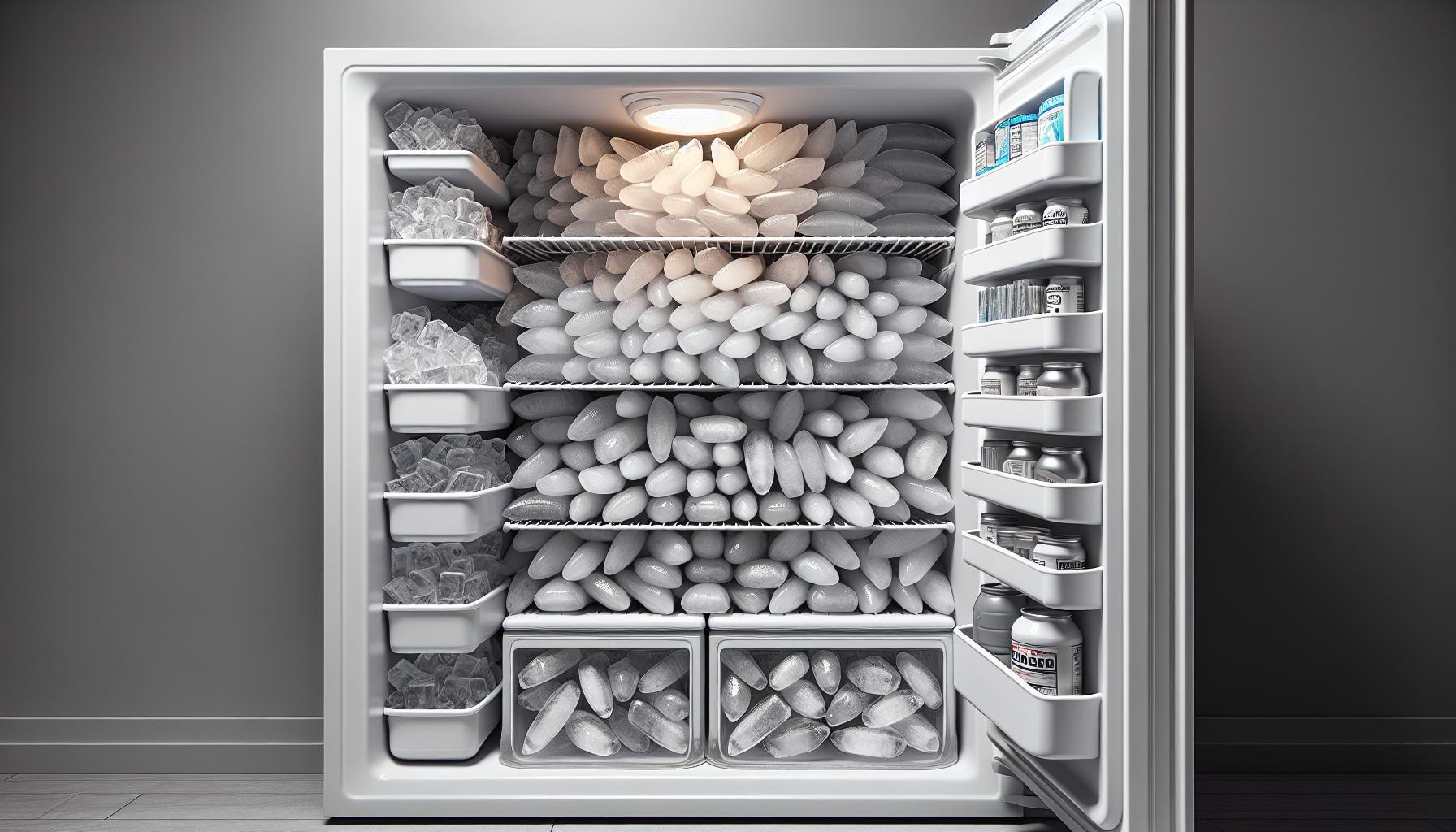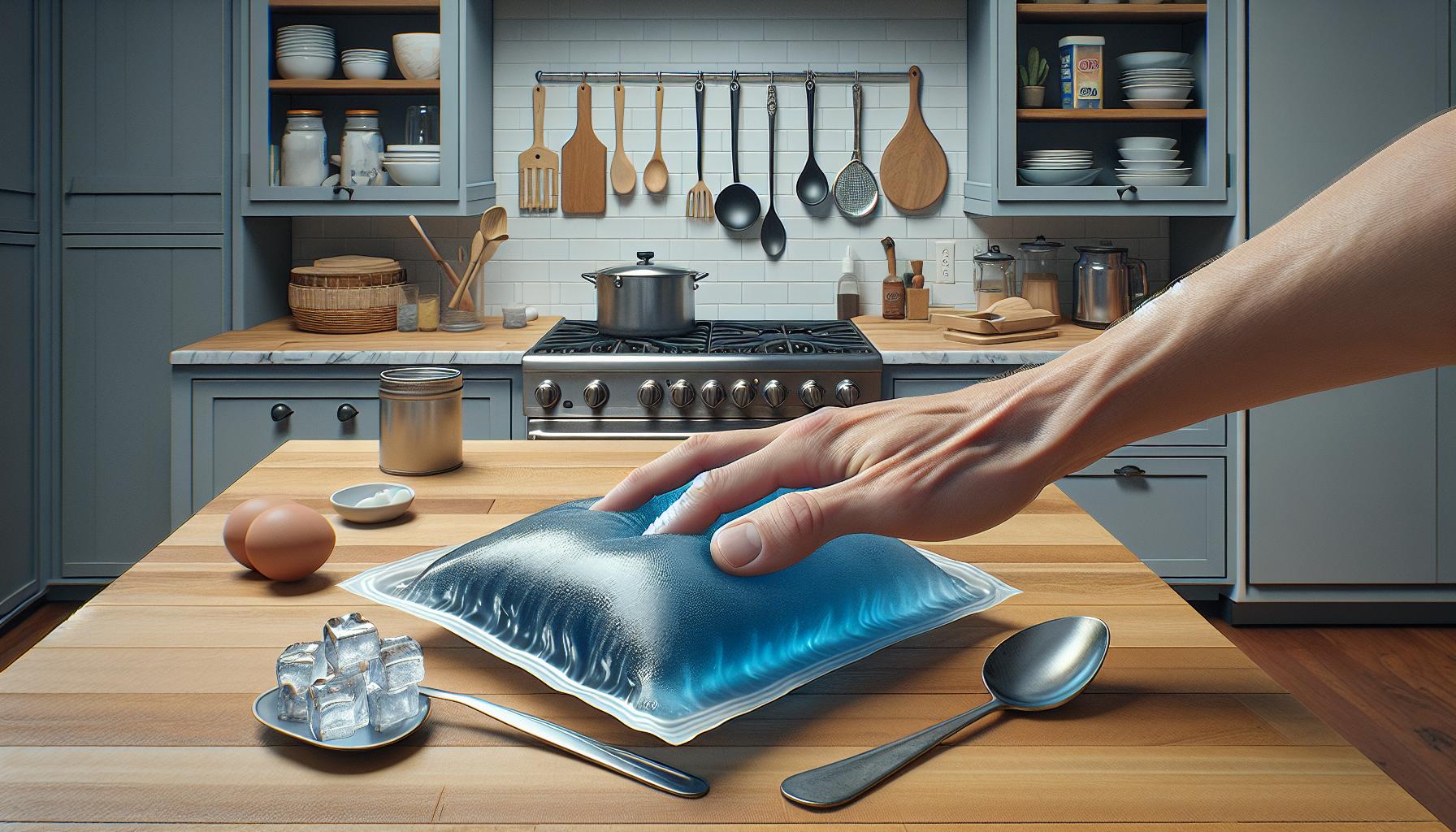Ice packs serve as essential first-aid tools for injuries and keep food fresh during transport. Yet many people find themselves waiting impatiently for these cooling companions to freeze properly before use. Understanding the correct freezing time can make a significant difference in their effectiveness.
Ice packs typically take between 2 to 4 hours to freeze completely in a standard home freezer set at 0°F (-18°C). However, the exact freezing duration depends on factors like the pack’s size, content type, and freezer temperature.
The proper freezing time isn’t just about convenience – it’s crucial for optimal performance. Whether someone’s preparing for a sports injury or packing tomorrow’s lunch these frozen essentials require proper planning. Getting the timing right ensures they’ll work effectively when needed most.
“1. Place pack flat in freezer
Placing ice packs flat in the freezer ensures even distribution of the freezing solution for optimal cooling performance. The flat position prevents the gel or liquid from accumulating in one area, creating uniform coldness throughout the pack.
- Place on a level freezer shelf
- Avoid stacking multiple packs
- Keep away from freezer walls
- Position horizontally on freezer shelf
A domestic freezer set at 0°F (-18°C) freezes ice packs effectively within 24 hours when positioned correctly. This placement technique maximizes surface area contact with cold air, speeding up the freezing process.
Here’s how temperature affects freezing time with proper placement:
| Freezer Temperature | Freezing Time |
|---|---|
| 0°F (-18°C) | 24 hours |
| -20°F (-29°C) | 12-24 hours |
Laying ice packs flat creates space efficiency in the freezer compartment while maintaining proper airflow around each pack. This positioning prevents uneven freezing spots that reduce the ice pack’s effectiveness.
2. Set freezer to 0°F

The optimal freezer temperature for freezing ice packs is 0°F (-18°C). Setting the freezer between -18°C and -20°C creates the ideal environment for consistent freezing results. A properly calibrated freezer maintains this temperature range throughout the freezing cycle.
Here’s what happens at 0°F:
- Ice packs freeze completely within 24 hours
- Gel contents solidify uniformly
- Cold temperature stays stable during the freezing process
Temperature Control Tips:
- Check freezer temperature with a thermometer
- Adjust settings to maintain 0°F
- Keep freezer door closed during the freezing period
| Temperature | Freezing Performance |
|---|---|
| 0°F (-18°C) | Optimal freezing |
| Above 0°F | Slower freezing |
| Below 0°F | No significant improvement |
The freezer’s temperature directly impacts the ice pack’s freezing efficiency. Fluctuating temperatures above 0°F extend the freezing time while temperatures below 0°F don’t provide meaningful benefits.
3. Leave for 4-6 hours

Ice packs require a minimum of 4 hours in a standard home freezer to reach optimal freezing temperature. Placing them flat on a freezer shelf allows the gel contents to freeze uniformly. Small gel packs freeze faster than larger ones, with compact sizes reaching solid state in 4 hours at 0°F (-18°C).
Freezing duration varies based on:
- Small ice packs (under 6 inches): 4 hours
- Medium ice packs (6-12 inches): 5 hours
- Large ice packs (over 12 inches): 6 hours
- Bulk quantities: 24-72 hours
For ThermogardⓇ gel packs laid flat in a commercial freezer, complete freezing takes 24 hours at -22°C. Multiple packs stacked together extend the freezing time due to reduced surface contact with cold air. Commercial blast freezers accelerate the process, requiring 48-72 hours for bulk quantities.
The ice pack remains frozen longer when left in the freezer for the full recommended duration. A partially frozen pack loses its cooling effectiveness rapidly during use.
4. Check firmness

Testing an ice pack’s firmness indicates its freezing status. Press the center of the ice pack with a finger – a fully frozen pack feels completely solid with no give or soft spots. The edges freeze first while the center takes longer to solidify, so checking the middle provides the most accurate assessment.
| Area of Ice Pack | Firmness When Frozen |
|---|---|
| Edges | Rock hard |
| Center | Solid, no flexibility |
| Corners | Completely rigid |
Three key indicators signal a properly frozen ice pack:
- Zero liquid movement when squeezed
- No soft or squishy sections throughout
- Even firmness across the entire surface
A partially frozen pack contains liquid spots that compress under pressure. Roll the pack between hands to detect any remaining unfrozen areas. For gel packs stored at -22°C, the contents transform from liquid to solid over 24 hours, reaching maximum firmness when freezing completes.
5. Store frozen until needed”
Ice packs maintain optimal freezing temperatures when stored continuously in the freezer at -22°C. Proper storage ensures immediate availability for emergencies or temperature-sensitive shipping needs. A dedicated freezer space for ice packs eliminates repeated freeze-thaw cycles that reduce effectiveness.
Storage requirements by pack type:
- Individual gel packs: Store flat on freezer shelves
- Multiple packs: Stack on flat racks with adequate airflow
- Bulk pallets: Keep in commercial freezers with consistent temperature
| Storage Location | Temperature | Max Storage Time |
|---|---|---|
| Home Freezer | 0°F/-18°C | 6 months |
| Commercial | -22°C | 12 months |
Storage tips for maximum effectiveness:
- Label packs with freeze dates
- Rotate stock every 6 months
- Keep packs away from frequent-access areas
- Maintain consistent freezer temperature
- Check firmness before use
Regular monitoring of freezer temperature prevents partial thawing. Removing ice packs only when needed preserves their cooling capacity for essential use cases like medical applications or food transport.



